Welcome to my guide to the best Sony APS-C lenses. This guide only covers native APS-C E-Mount (E) lenses from Sony and third parties that are designed for Sony APS-C cameras like the Sony a5100, a6000, a6300, a6400, and a6500. If you are looking for a full-frame lens then see my Full-Frame E-Mount Lenses Guide.
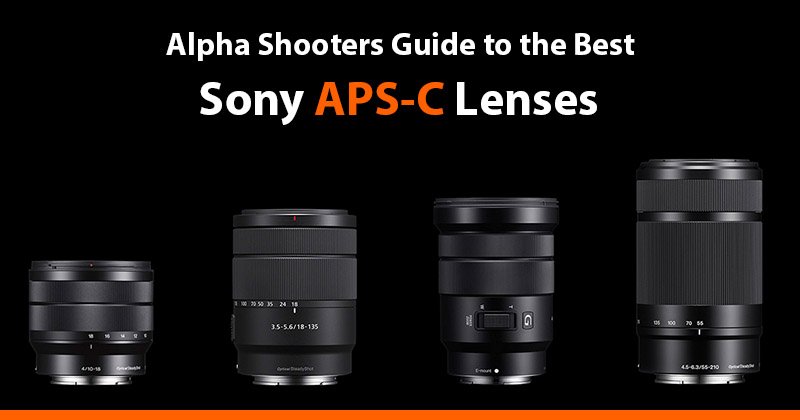
Please note that this guide does not include every single E-mount lens, it’s just a selection of the most popular lenses based on use in the Alpha Shooters community. Visit my E-mount Lenses Guide for a complete list of lenses.
Sony APS-C Lenses (Contents)
To help you find the best lens for your intended use I’ve categorized them into the following groups. There is a little duplication between the groups but this should hopefully make it much easier for you to find the lens that you are looking for.
**Please Note: Unless otherwise mentioned no post processing has been applied to the image samples in this guide except for cropping. Full resolution SOOC JPEG images are available to download. RAW files are also available but password protected to help keep my hosting costs sensible. However, I do provide the username/password to all members of our community forum. All images are copyright protected and may be used for personal use only.
Best Sony APS-C Wide-Angle Lenses
A wide-angle lenses allow more of the scene to be included in the frame. Both wide-angle and ultra-wide-angle lenses are popular choices with landscape, architectural and interior photographers. Here are some of the best wide-angle lenses for Sony APS-C mirrorless cameras like the a6000 series.
Sony E 10-18mm F4 OSS (SEL1018) APS-C Lens
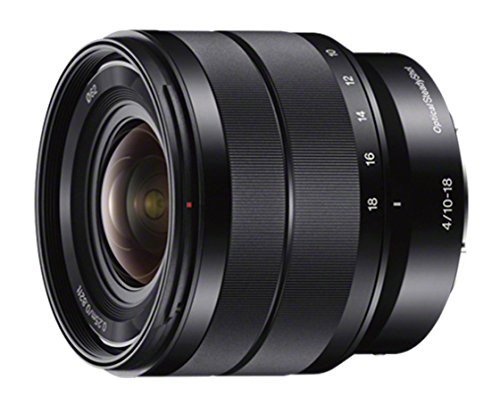
The Sony E 10-18mm F4 OSS is an APS-C lens and also the widest that Sony offers with a focal range of between 10-18mm. With a maximum constant aperture of f/4, autofocus and optical image stabilization all packed into a high quality metal housing, this is really a pretty nice lens and also one that I own myself.
At 10mm the lens is already sharp at f/4 in the center of the frame, but things do get a little softer towards the edge. However stop down to f/5.6 and the edges soon become nice and sharp and at f/8 the sharpness is extremely good across the frame. For 9/10 of my landscape shots I’m typically using this lens at f/8, so don’t worry about the softer corners when wide-open at f/4. At 14-18mm sharpness drops off a little at f/4, but stopping down to f/8 soon sharpens things up again.
Chromatic aberrations are reasonably well controlled but some purple fringing is visible in high contrast shots. However, with lens corrections turned on this will always be corrected with JPEG images and if you shoot raw then you can easily fix this in post.
Wide-angle lens always suffer from vignetting in the corners and the 10-18mm is no different. At 10mm and f/4 vignetting is apparent and it’s not even gone completely at f/11. Thankfully in-camera corrections also take care of this for JPEG images. There is only a small amount of distortion visible but again this will be corrected in-camera for JPEGS.
At only 225g this is a very light lens and is often my first choice when I’m travelling light or hiking in the mountains. Below is a shot of Mont Blanc that I took with the 10-18mm on my Sony a6500, I only admired this mountain from afar!
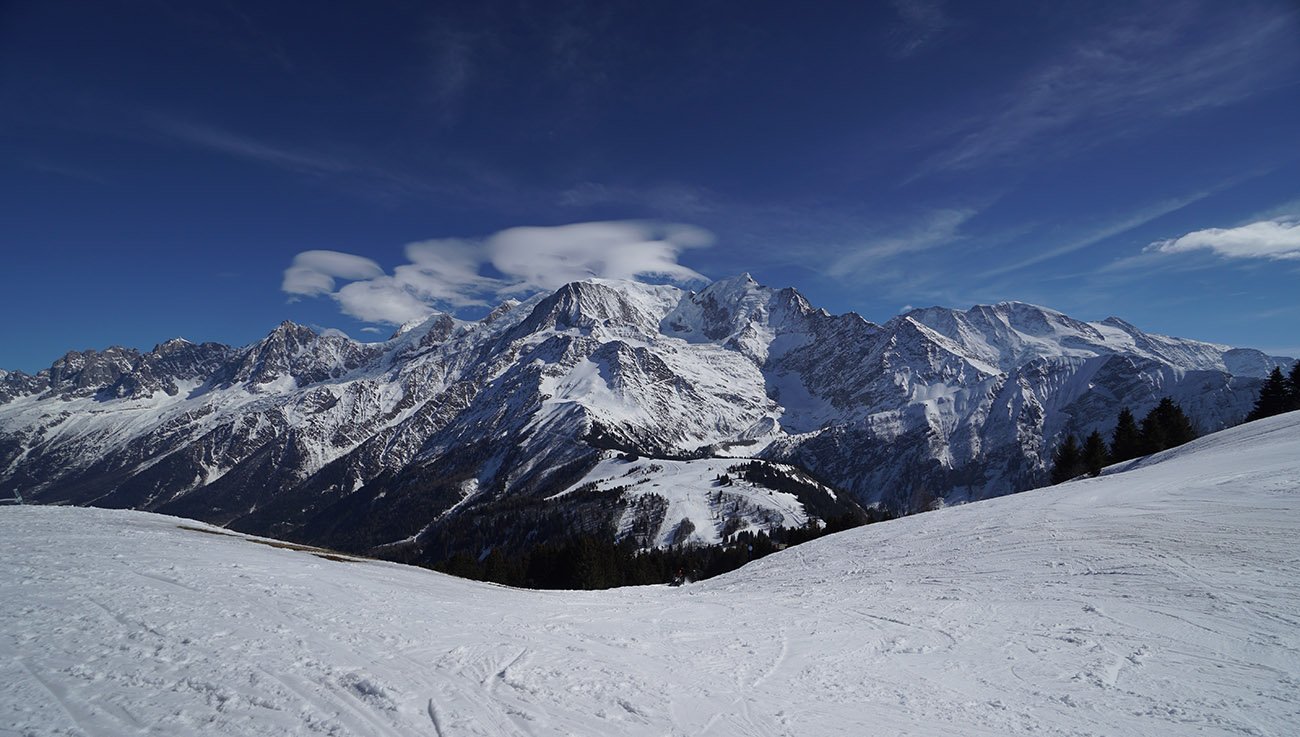
Sony E 10-18mm (Shot on a6500) @ 10mm | 1/400 | f/7.1 | ISO 100 | Handheld | ** Full Resolution SOOC Download: JPEG | RAW
Pros: Build quality, low weight, sharpness, distortion, quiet AF motor
Cons: Vignetting, expensive
Recommended Reviews: Drew Robinson | John Sison (YouTube) | Stuck in Customs | SonyAlphaLab
Sample Photos: Flickr
Minimum Focusing Distance: 0.25m (0.82ft)
Minimum Aperture: f/22
Maximum Aperture: f/4
Aperture Blades: 7
Auto Focus: Yes
Stabilization: Yes
Filter Thread Size: 62mm
Length: 63.5mm (2-1/2 in.)
Diameter: 70.0mm (2-7/8 in.)
Weight: 225g (8oz.)
Laowa 9mm f/2.8 Zero-D
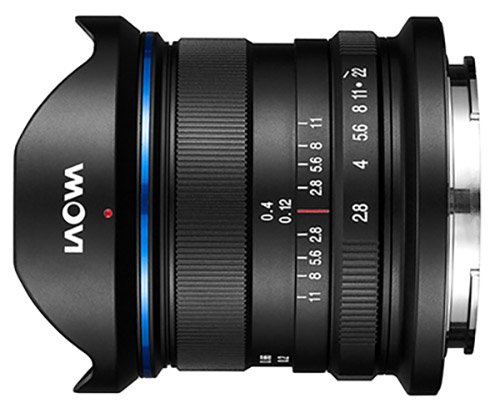
The Laowa 9mm f/2.8 Zero-D is the widest wide-angle lens that you can currently buy for Sony APS-C E-mount cameras like the a6000 series. It is manual focus only, but if don’t mind this then this lens is definitely a great one to have in your gear bag.
Wide-open at f/2.8 central sharpness is excellent, and it becomes even better at f/4 and f/5.6. Edge sharpness isn’t quite so good wide-open, but it’s very good when you hit f/5.6 through to f/11. Diffraction will start to kick in if you stop down past f/11. CA (Chromatic Aberration) is very well controlled. Vignetting wide-open at f/2.8 is very noticeable, and it remains even if you step-down to f/11.
Despite the Zero-D in the name which stands for “Zero Distortion”, there is very minimal distortion but it’s really nothing to worry about and can easily be corrected in post. Flare control could be better and you will get some flare when pointing this lens towards strong light sources, even with the lens hood on.
The Laowa manages coma very well making the Laowa 9mm an option for astro photographers, although the vignetting could be cause for concern.
The Laowa 9mm f/2.8 Zero-D is very well built and weighs in at only 215g, so you will barely notice this lens on your Sony a6000 series camera. If money were no object I’d order one today.
Pros: Very sharp, low CA, low distortion, compact
Cons: Manual focus only, flare control, vignetting, price
Recommended Reviews: Christopher Frost (YouTube) | Technology Mafia (YouTube) | ePhotoZine
Sample Photos: FlickR
Minimum Focusing Distance: 0.12m (0.39ft)
Minimum Aperture: f/22
Maximum Aperture: f/2.8
Aperture Blades: 7
Auto Focus: No, manual focus only
Stabilization: No.
Filter Thread Size: 49mm
Length: 53mm (2.1 in.)
Diameter: 60mm (2.36 in.)
Weight: 215g (7.58oz.)
Price Check & Buyer Reviews for Laowa 9mm f/2.8 Zero-D
At: Amazon | B&H Photo | Venus Lens
Rokinon / Samyang 12mm f/2.0 NCS CS
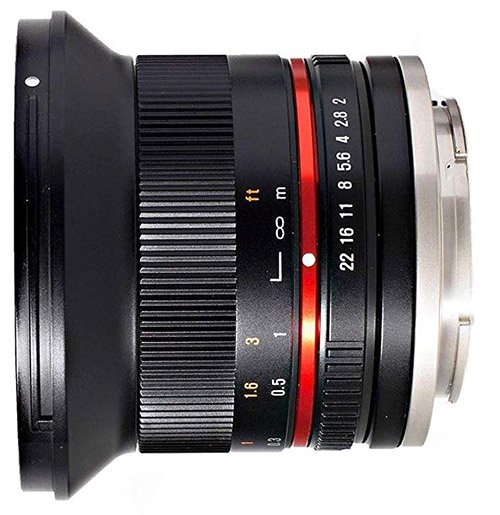
The Rokinon 12mm f/2.0 NCS CS as it’s known in the US, or the Samyang 12mm f/2.0 NCS CS as it’s known in Europe are both identical APS-C lenses from the same company, but for their own branding reasons use the name Rokinon in the US and Samyang in Europe. I’m just going to call it Rokinon here to make life easier for me. So now that’s cleared up is the lens any good?
Optically, the Rokinon 12mm f/2.0 NCS CS is a very good lens. It’s sharp wide-open at f/2 in the center of the frame and the edges just drop off a little. Sharpness improves even more at f/2.8 and f/4 and the edges are nice and sharp also by f5/6. There is mild barrel distortion and some vignetting wide-open at f/2 but this improves by f/4.
For astro photographers this lens has excellent coma performance, combined with its fast f/2 aperture and an ultra-wide field of view make it a superb lens for shooting the night sky.
The build quality of this lens is excellent and it feels solid, despite weighing only 245g. The only downside to this lens is that both the aperture control and focusing are completely manual, as the lens has no electronic contacts with the camera.
If you don’t mind manually focusing then for the price this lens is really hard if not impossible to beat right now, that’s providing that you are happy with the 12mm focal length. If you need wider, then your best bet is the Sony E 10-18mm F4 or the Laowa 9mm f/2.8 Zero-D.
Pros: Sharpness, build quality, low CA, low coma, price
Cons: Manual focus only
Recommended Reviews: Ian Norman | Jordan Steele | Technology Mafia (Youtube)
Sample Photos: Flickr
Minimum Focusing Distance: 0.2m (0.66ft)
Minimum Aperture: f/22
Maximum Aperture: f/2
Aperture Blades: 6
Auto Focus: No, manual focus only
Stabilization: No
Filter Thread Size: 67mm
Length: 59mm (2.32 in.)
Diameter: 72.5mm (2.85 in.)
Weight: 245g (8.64oz.)
Sigma 16mm f/1.4 DC DN

If you are looking for one of the sharpest wide-angle APS-C lenses with autofocus, then the Sigma 16mm f/1.4 DC DN is certainly a lens that you will want to take a closer look at.
With a maximum aperture of f/1.4 this is a very fast lens. Central sharpness is very good at f/1.4 and f/2, and it becomes even sharper at f/2.8 through to f/8. Diffraction does start to kick in from around f/11 but sharpness still remains good.
There are signs of CA (Chromatic Aberration) both centrally and at the edges of the frame, but this is very low and can easily be corrected in-camera if you are shooting JPEGS and in post if you are shooting raw. Barrel distortion is practically nonexistent and certainly nothing to worry about.
Flare resistance is extremely good and even when shooting directly into the sun it’s very difficult to induce any flare at all. The nine bladed aperture also produces very pleasing sunstars when you step the aperture down.
The focus ring is buttery smooth and the lens itself is well built and weather sealed, the only real downside to this lens is that the AF motor is not the quietest.
For astrophotography shooters this lens does unfortunately exhibit some coma. Stars are nice and round in the center of the frame, but closer to the edges they do start to stretch a little. But that that certainly doesn’t stop this being one of the best APS-C lenses for astrophotography, here’s a YouTube Review worth watching if you shoot astro, and also a Sigma 16mm F1.4 vs Rokinon 12mm F2.0 Comparison for astro.
Pros: Sharpness, price, low CA, build quality, flare resistance
Cons: AF motor noise
Recommended Reviews: Dustin Abbott | Technology Mafia (YouTube)
Sample Photos: Flickr
Minimum Focusing Distance: 0.25m (2.07ft)
Minimum Aperture: f/16
Maximum Aperture: f/1.4
Aperture Blades: 9
Auto Focus: Yes
Stabilization: No
Filter Thread Size: 67mm
Length: 92.3mm (3.6 in.)
Diameter: 72.2mm (2.8 in.)
Weight: 405g (14.3oz)
Best Sony APS-C Zoom Lenses up to 135mm
If you are looking for a little more reach and flexibility then you will probably want to consider a zoom lens. Many of these lenses are great all-in-one lenses that will help you to get the shot no matter where you are or what you are shooting. Here are some of the best zooms up to 135mm in focal length.
Sony E 16-55mm F2.8 G (SEL1655G)
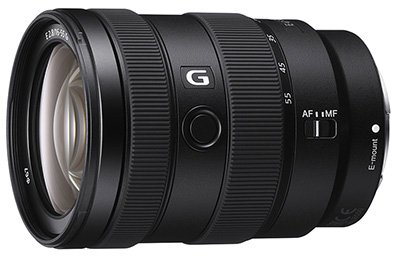
Pros: NA
Cons: NA
Recommended Reviews: NA
Sample Photos: Sony Gallery
Format: APS-C
Lens Construction: 12 groups, 17 elements
Angle of View: 83°-29°
Aperture Blades: 9 rounded
Minimum Aperture: f/22
Maximum Aperture: f/2.8
Minimum Focusing Distance: 1.09 ft (0.33 m)
Maximum Magnification Ratio: 0.66
Auto Focus: Yes
Stabilization: No
Filter Thread Size: 67mm
Length: 100mm
Diameter: 73mm
Weight: 494g / 17.5 oz
Sony E 18-135mm F3.5-5.6 OSS (SEL18135)
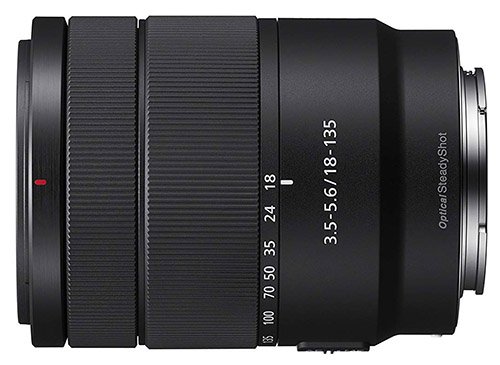
The Sony E 18-135mm F3.5-5.6 OSS is an APS-C lens that does everything really well. It’s small and lightweight and is definitely my own personal favourite travel lens for when I want to travel as light as possible. It covers a wide focal range from 18mm all the way up to 135mm and has a variable aperture of f/3.5 up to f/5.6.
Central sharpness at 18mm is very good but does improve from f/5.6 all the way up to f/11. At f/16 diffraction kicks in and things start to get just a little softer. At 35mm sharpness is excellent from f/3.5 up to f/11 then starts to drop at f/16. At 70mm and 135mm central sharpness is excellent from f/5.6 to f/11, but starts to drop at f/16. The edges are a little soft when using the longer focal lengths, but the center always remains sharp.
CA (Chromatic Aberration) centrally at 18mm is very well controlled, however the edges do show signs of fringing. This improves up to 70mm, but then at 135mm things become worse. Fortunately in-camera corrections take care of this, so if you are shooting in JPEG you don’t need to worry about it. Flare control is excellent and the bokeh is very smooth.
The Sony E 18-135mm F3.5-5.6 OSS lens also includes the inbuilt OSS (Optical Steady Shot) system which helps to stabilize camera shake on cameras that do not have IBIS built-in (like the Sony a6000). The autofocus motor is both fast and silent, and the lens feels well built. Sadly it is not weather sealed, so you need to be a little more careful with this lens when the heavens open.
I own this lens myself and have no regrets buying it. If you want an all-in-one travel lens that can do everything well and not weigh you down, then this is it. Here are just a couple of shots I’ve taken with it on my Sony a6400.

Sony E 18-135mm (Shot on a6400) @ 125mm | 1/1000 | f/6.3 | ISO 200 | ** Full Resolution SOOC Download: JPEG | RAW

Sony E 18-135mm (Shot on a6400) @ 120mm | 1/200 | f/8 | ISO 200 | ** Full Resolution SOOC Download: JPEG | RAW

Sony E 18-135mm (Shot on a6400) @ 135mm | 1/1000 | f/5.6 | ISO 3200 | ** Full Resolution SOOC Download: JPEG | RAW
Pros: Lightweight, well built, bokeh, central sharpness, fast AF
Cons: No weather sealing, poor edge sharpness at 135mm
Recommended Reviews: Technology Mafia (YouTube) | SonyAlphaLab (YouTube) | Christopher Burress (YouTube)
Sample Photos: My Sample Photos | Flickr
Minimum Focusing Distance: 0.45 m (1.48 ft)
Minimum Aperture: f/22-36
Maximum Aperture: f/3.5-5.6
Aperture Blades: 7
Auto Focus: Yes
Stabilization: Yes
Filter Thread Size: 55mm
Length: 88mm (3-1/2 in.)
Diameter: 67.2mm (2-3/4 in.)
Weight: 325 g (11.5 oz.)
Sony E PZ 18-105mm F4 G OSS (SELP18105G)

The Sony E PZ 18-105mm F4 G OSS lens is possibly one of the most popular short zoom APS-C lens that Sony makes, well at least it was until the 18-135mm was released. The 18-105 features a constant aperture of f/4 and a motorized internal zoom, so the lens body itself does not extend. Sony label this as a G lens, so both the build and optical quality are a step above their non G lenses. At 427g this lens is a good 100g heavier than the 18-135mm and it’s also longer and wider too.
The lens has optical image stabilization built in and the autofocus is both fast and accurate. The motorized zoom is controlled by a rocker switch on the lens, however I personally find that it’s too slow and would much rather have a non-motorized zoom.
At 18mm and the maximum aperture of f/4 central frame sharpness is excellent and the corners are just a little softer. Stopping down to f/5.6 improves the central sharpness even further and the corners are now also nice and sharp. At 45mm sharpness is even better and at 105mm sharpness is still excellent. Sadly, at 105mm edge sharpness does take a turn for the worse.
At the edges of the frame you will see some chromatic aberrations are prevalent towards the edges of the frame and there is also some vignetting at 18mm and f/4. Step-down to f/5.6 and the vignetting is gone. Distortion unfortunately it not so well controlled with both barrel and pincushion distortion visible. In-camera corrections will take care of this distortion when shooting in JPEG mode, but central sharpness can suffer as a result. Flare control is very good even when shooting directly into bright light sources.
I own this lens myself but since purchasing the 18-135mm lens it has just bene collecting dust. The 18-135mm is smaller, lighter, sharper in the center, and despite the variable aperture is definitely my preferred lens to take with me when I’m travelling light. However, video shooters might prefer the constant f/4 aperture and motorized zoom over the variable aperture and manual zoom of the 18-135mm, and the edge sharpness will probably be of less concern.
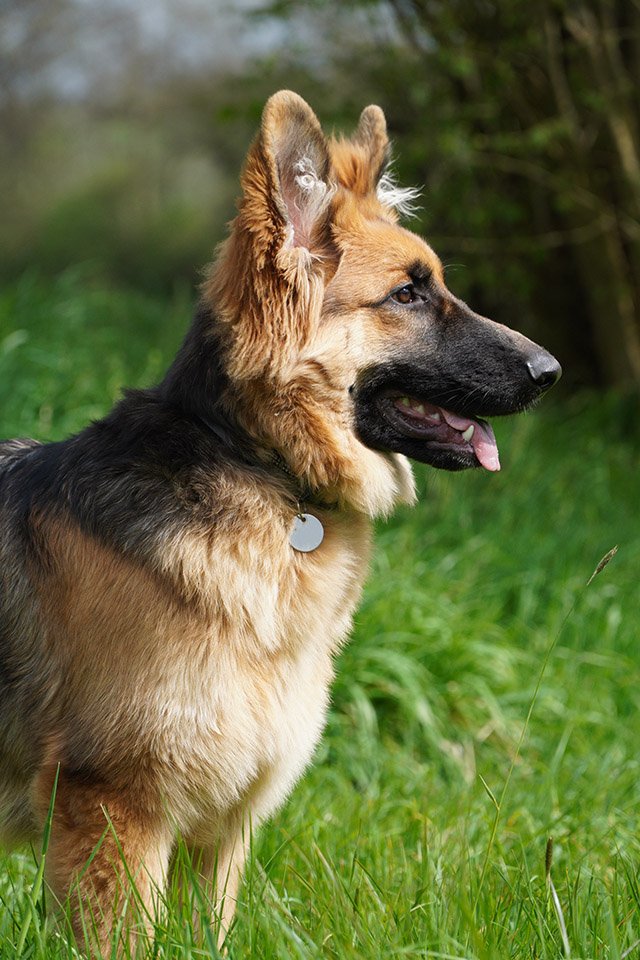
Sony E PZ 18-105mm (Shot on a6400) @ 105mm | 1/1250 | f/4.5 | ISO 250 | Full Resolution SOOC Download: JPEG

Sony E PZ 18-105mm (Shot on a6400) @ 105mm | 1/1600 | f/4 | ISO 500 | ** Full Resolution SOOC Download: JPEG | RAW
Pros: Build quality, center sharpness, image stabilization, constant aperture
Cons: Edge sharpness at f/4 not great, CA, distortion at 105mm
Recommended Reviews: Jordan Steele | Christopher Frost (YouTube)
Sample Photos: Flickr
Minimum Focusing Distance: 0.45 (Wide)-0.95m (Tele) (1.48 (Wide)-3.12ft (Tele))
Minimum Aperture: f/22
Maximum Aperture: f/4
Aperture Blades: 7
Auto Focus: Yes
Stabilization: Yes
Filter Thread Size: 72mm
Length: 110mm (4-3/8in.)
Diameter: 78mm (3-1/8 in.)
Weight: 427g (15.1oz.)
Best Sony APS-C Portrait Lenses
Portrait lenses are often very subjective, as you can more or less use any lens that you like to shoot portraits with. However, traditionally the term ‘portrait lens’ was used to describe lenses in the 85mm to 135mm focal range. Ultimately the decision is likely to come down to your own personal style of photography.
Prime lenses are often preferred over zooms since they will have a wider maximum aperture which is great for isolating your subject and producing a lovely creamy bokeh. Prime lenses are often sharper than zooms and also smaller and lighter in weight making handling them a lot more comfortable.
Here are some of the best portrait lenses for Sony APS-C mirrorless cameras.
Sony E 35mm F1.8 OSS (SEL35F18)

With a focal length of 35mm on an APS-C camera like the Sony a6000 series, the Sony E 35mm F1.8 OSS lens offers an equivalent focal length on a full-frame camera of around 52mm. For portrait photography this is a little wider than the often preferred 85mm focal length for portrait shooters, but it’s a still works a treat and also allows you to include more of the environment in your image.
At f/1.8 sharpness in the center of the frame is very good, the edges are a little softer and you will need to stop down to around f/4 to sharpen these up. Chromatic aberrations are very well controlled, but there is a small amount of purple fringing when shooting high contrast subjects wide-open, stepping down corrects this as does turning on in-camera corrections if you are shooting JPEG. There is a little vignetting wide-open at f/1.8, but stepping down to f//4 soon clears this up.
There is little in the way or distortion to worry about and the coating on the lens does a very good job of resisting flare. The OSS does a good job of stabilizing the lens for shooting hand-held, and the autofocus motor is reasonably fast and very quiet.
I own this lens but I’m not a big people portrait shooter myself, so here’s a shot of my dog Frank at 13 weeks of age and shot on my Sony a6500.

Sony E 35mm F1.8 (Shot on a6400) @ 35mm | 1/4000 | f/2.8 | ISO 320 | Cropped + Shadows Recovered in LR | ** Full Resolution SOOC Download: JPEG | RAW

Sony E 35mm F1.8 (Shot on a6500) @ 35mm | 1/1250 | f/1.8 | ISO 320 | ** Full Resolution SOOC Download: JPEG | RAW
Pros: Build quality, size, maximum aperture of f/1.8, silent AF, pleasing bokeh, price
Cons: Slow AF performance, chromatic aberrations
Recommended Reviews: Matthew Durr | Christopher Frost (YouTube)
Sample Photos: Flickr
Minimum Focusing Distance: 0.3m (0.99ft)
Minimum Aperture: f/22
Maximum Aperture: f/1.8
Aperture Blades: 7
Auto Focus: Yes
Stabilization: Yes
Filter Thread Size: 49mm
Length: 45mm (1-13/16 in.)
Diameter: 63mm (2-1/2 in.)
Weight: 154g (5.5oz.)
Sigma 30mm f/1.4 DC DN Contemporary
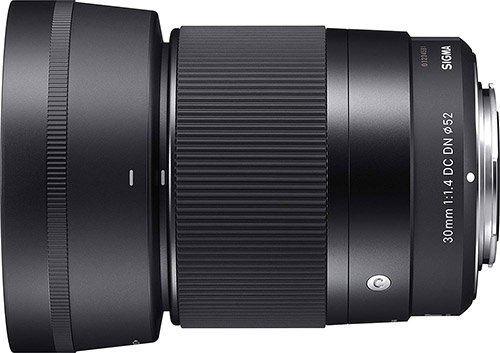
The Sigma 30mm F1.4 DC DN Contemporary lens is one of the sharpest lenses available for Sony E-mount and their APS-C range of cameras. It’s even sharper and offers better contrast than the more expensive Sony E 35 F1.8 lens. A new firmware update has also addressed earlier autofocus issues, although the Sony E 35mm F1.8 is still faster and more accurate when it comes to focusing.
As to be expected with such a wide lens, there is some vignetting when shooting wide-open, with around 1 1/3 stops light lost in the extreme corners. However, stop down to f/1.8 and you’ll already see a big improvement here. There is some lateral CA but this is easily removed in post or corrected in camera with JPEGS. Barrel distortion is definitely present but again this can be corrected in camera or in post.

Sigma 30mm F1.4 DC DN (Shot on a6400) @ f/1.4 | 1/400 | ISO 160 | Full Resolution SOOC Download: JPEG | RAW **
When shooting wide-open at f/1.4 the central sharpness from this lens needs to be seen to be believed as does the creamy smooth bokeh, you’ll need to step down to f/2.8 to achieve the same levels of sharpness with the Sony E 35mm F1.8.
There’s no doubt that this is a brilliant lens and it’s one that I hope to be adding to my gear bag very soon.
Pros: Sharpness, size, price, bokeh
Cons: Vignetting, distortion
Recommended Reviews: Lavikka Photography (YouTube) | DPReview
Sample Photos: Flickr
Lens Construction: 9 elements in 7 groups
Minimum Focusing Distance: 30cm / 11.8in.
Minimum Aperture: f/16
Maximum Aperture: f/1.4
Aperture Blades: 9 rounded
Auto Focus: Yes
Stabilization: No
Filter Thread Size: 52mm
Length: 73.3㎜ / 2.9in
Diameter: 64.8㎜ / 2.55in.
Weight: 265g/ 9.3oz.
Sony E 50mm F1.8 OSS (SEL50F18)

The Sony 50mm f/1.8 OSS lens is one of the best lenses for shooting portraits on a Sony APS-C E-mount camera. It provides a full-frame equivalent focal length of 75mm, putting it very close to 85mm which many shooters prefer for portraits.
Thanks to its wide aperture of f/1.8 this lens is capable of producing some very nice bokeh. The lens is also very sharp even at f/1.8 in both the center of the frame and the corners, and this only gets better all the way down to f/11 when diffraction starts to kick in. There is a little purple fringing wide-open but nothing to worry about and this is also corrected if you are shooting in JPEG mode with in-camera corrections turned on.
There is a little vignetting at f/1.8 but step down to f/2.8 and it’s gone, distortion is also well controlled. There is some flare when shooting directly into bright light sources but nothing extreme that you will need to worry about.
Overall this is an excellent lens and one that I would like to own myself someday.
Pros: Sharpness across the frame, build quality, price, bokeh, lightweight
Cons: Slow autofocus in low light
Recommended Reviews: Christopher Frost (YouTube)
Sample Photos: Flickr
Minimum Focusing Distance: 0.39m (1.28ft)
Minimum Aperture: f/22
Maximum Aperture: f/1.8
Aperture Blades: 7
Auto Focus: Yes
Stabilization: Yes
Filter Thread Size: 49mm
Length: 62 mm (2-1/2 in.)
Diameter: 62 62mm (2-1/2 in.)
Weight: 202g (7.2oz.)
Sigma 56mm f/1.4 DC DN Contemporary

Just like both the Sigma 16mm and the 30mm, the Sigma 56mm f/1.4 DC DN Contemporary lens delivers level of sharpness that need to be seen to be believed. Central sharpness is excellent from f/1.4 right through to f/11, and it is still very good even at f/16. The extreme edges are very good from f/1.4 to f/2.8 and excellent from f/4 to f/11. When compared to the Sony E 50mm F1.8, the Sigma is significantly sharper.
Focusing is both fast and quiet, flare well controlled and the build quality is very high. The bokeh is is very smooth making this an excellent choice for a portrait lens. Chromatic aberration, mild vignetting and distortion is present, but in-camera corrections help to address these and if you shoot raw you can also correct in post.
With a 35mm equivalent focal length of 84mm this lens is ideal for portrait photography. If money were no object I’d certainly like to own one.
Pros: Very sharp, price, build quality, bokeh
Cons: Vignetting, CA
Recommended Reviews: Technology Mafia (YouTube) | Camera Labs
Sample Photos: Flickr
Lens Construction: 10 elements in 6 groups
Minimum Focusing Distance: 50cm / 19.7in.
Minimum Aperture: f/16
Maximum Aperture: f/1.4
Aperture Blades: 9 rounded
Auto Focus: Yes
Stabilization: No
Filter Thread Size: 55mm
Length: 59.5mm / 2.3in
Diameter: 66.5mm / 2.6in.
Weight: 280g / 9.9oz.
Best Sony APS-C Macro Lenses
Macro lenses are often used to take photos of things close up like bugs, food, or generally anything that you would like to blow up really big to see as much detail as possible. A macro lens should have the ability to focus from infinity to 1:1 magnification at the closest focusing distance, this means that the size of the image in real life is the same size as it is reproduced on the sensor of your camera.
When choosing a macro lens the two most important figures that you should be looking at are the magnification ration and the minimum focusing distance. Ideally you will want a magnification ration of 1:1, and the longer the minimum focusing distance (working distance) the better since it allows you to put more working space between your lens and your subject.
You might think that a smaller minimum focusing distance would be better since it allows you to get closer to your subject. However, if you get too close your lens will block light from reaching your subject and may also cast a shadow on it, and if your subject is alive it may well fly away before you have chance to focus and hit the shutter button.
Because there is only one macro lens in the Sony APS-C lens line-up, I’d also recommend looking at my Sony Full-Frame Macro Lenses Guide for further options. Full-frame E-mount lenses are supported and work perfectly on APS-C cameras like the Sony a6000 series.
Sony E 30mm F3.5 Macro (SEL30M35)

The Sony E 30mm F3.5 Macro APS-C lens is the most affordable E-mount macro lens available right now with a 1:1 magnification ratio. This lens is well built, compact and light in weight but unfortunately it does not have optical image stabilization (OSS) built in, so you will need to use a higher shutter speed to compensate for camera shake if you are shooting hand-held.
30mm is actually quite a short focal length for a macro lens, and with a minimum focusing distance of only 9.5cm from the camera’s sensor you will need to be very close to your subject to get 1:1 magnification. This should be no trouble if your subject is not living, but for bugs it might be a challenge. You will also start to block the light from reaching your subject when you are so close and also risk casting a shadow.
Central sharpness is very good at f/3.5 and improves down to f/8, whereas the edges are a little softer but for macro work where your subject is normally in the center of your frame this will probably be of no concern. CA is well controlled in the center of the frame, but could be better towards the edges where you will notice some color fringing in high contrast scenes. Flare is well controlled.
The autofocus is fast and quiet, which is definitely important if you don’t want to scare off your subject. Personally I prefer to use focus peaking and focus manually when shooting macro, as with the autofocus it’s always very difficult to nail focus on the eyes when shooting very small creatures like butterflies.
Unless your budget stretches to a full-frame macro lens, then this really is your best choice for a macro lens on the Sony a6000 series. That is unless you don’t like the silver color, as unfortunately this lens is not available in black which I find to be an odd omission by Sony.
Pros: Build quality, size, sharpness, 1:1 magnification, price
Cons: Edge sharpness, small working distance
Recommended Reviews: Technology Mafia (YouTube) | ePhotozine
Sample Photos: Flickr
Maximum Magnification Ration: 1:1
Minimum Focusing Distance: 0.095m (0.32ft)
Minimum Aperture: f/22
Maximum Aperture: f/3.5
Aperture Blades: 7
Auto Focus: Yes
Stabilization: No
Filter Thread Size: 49mm
Length: 55.5 mm (2-1/4in.)
Diameter: 62.0 mm (2-1/2in.)
Weight: 138g (4-7/8oz.)
Telephoto Lenses
A long lens is typically the hallmark of sports and wildlife photographers because there is often quite some separation between the photographer and their subject. Sports photographers will often work with lenses up to 400mm, whereas wildlife photographers prefer the longest glass possible depending on what they are shooting.
The longest APS-C lens that Sony currently offers is the E 70-350mm. If you require a focal length of greater than 350mm then I’d recommend looking at my Sony Full-Frame Sports and Wildlife Lenses Guide for further options. Full-frame E-mount lenses are supported and work perfectly on Sony APS-C E-mount cameras like the Sony a6000 series.
Sony E 70-350mm F4.5-6.3 G OSS (SEL70350G)
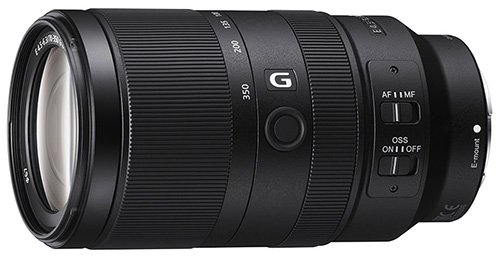
Pros: NA
Cons: NA
Recommended Reviews: NA
Sample Photos: My 70-300 vs 70-350 Comparison
Format: APS-C
Lens Construction: 13 groups, 19 elements
Angle of View: 22°-4°40′
Aperture Blades: 7 circular
Minimum Aperture: f/4.5-6.3
Maximum Aperture: f/22-32
Minimum Focusing Distance: 3.61–4.93 ft (1.1–1.5 m)
Maximum Magnification Ratio: 0.75
Auto Focus: Yes
Stabilization: Yes
Filter Thread Size: 67mm
Length: 142mm
Diameter: 77mm
Weight: 625g / 22.1 oz
Sony E 18–200mm F3.5–6.3 OSS LE (SEL18200LE)

If the Sony E 18-135mm lens is too short at the long-end of the zoom range for you, then the Sony E 18–200mm F3.5–6.3 OSS LE lens might be worth investing in. This APS-C lens covers a very useful focal length from 18mm all the way up to 200mm with a variable aperture of f/3.5 to f/6.3.
The lens is well built and has optical image stabilization (OSS) built in that helps to limit camera shake allowing you to shoot handheld at much lower shutters speeds. The autofocus is quick, accurate and quiet.
The Sony E 18-200mm f/3.5-6.3 EL offers very good results for sharpness between 50mm and 100mm, at 200mm sharpness isn’t as great, but will still be acceptable to most. At its widest angle of 18mm the lens produces reasonably sharp images even at its widest aperture of f/3.5. Stopping down doesn’t offer any improvement for sharpness and diffraction takes hold at f/8-f/11, but there’s no noticeable sharpness drop-off until f/16.
The lens does show some signs of chromatic aberration at the wide and tele-ends, but the camera will apply corrections for CA when shooting in JPEG mode. Vignetting is visible at 18mm and f/3.5, but stop down to f/5.6 and you won’t see it. At 200mm vignetting at f/6.3 is again visible, but stop down to f/8 and it’s gone.
Distortion can be found throughout the entire focal length but in-camera corrections will fix this for you, at least if you are shooting in JPEG mode. The SEL18200LE handles flare pretty well even when shooting directly into bright sunlight.
Pros: Wide focal range, build quality, central sharpness, flare control
Cons: Vignetting wide-open, distortion, price
Recommended Reviews: James Tan | John Sison (YouTube)
Sample Photos: Flickr
Minimum Focusing Distance: 0.5m (1.64ft)
Minimum Aperture: f/22-40
Maximum Aperture: f/3.5-6.3
Aperture Blades: 7
Auto Focus: Yes
Stabilization: Yes
Filter Thread Size: 62mm
Length: 97.1mm (3-7/8 in.)
Diameter: 68mm (2-3/4 in.)
Weight: 460g (16.3oz.)
Sony E 55-210mm F4.5-6.3 OSS (SEL55210)

The Sony E 55-210mm F4.5-6.3 OSS lens covers a very useful focal range. Sure it’s not as wide as the 18-200mm, but it does offer comparable image quality and at much more pocket friendly price too.
Build quality is very good and the autofocus is fast, accurate and virtually silent. Optical image stabilization is also very useful when shooting handheld, especially at the longer end of the zoom range.
From 55mm to 120mm the lens is very sharp in the center of the frame when shooting wide-open, the corners are a little softer but stepping down one stop soon improves them. At 210mm the center is a little softer but is still perfectly sharp, at least it is to my own eyes. There are signs of both vignetting and chromatic aberration, but the in-camera corrections will take care of this for JPEG shooters. If you shoot raw then you can make use of LR profiles to correct this.
I do own this lens myself and it is my preferred choice of lens if the 18-135mm is not quite long enough for my needs. It’s a super little all-round lens that can shoot pretty much anything that you can throw at it. Here are a couple of shots that I have taken with it mounted to my a6500.
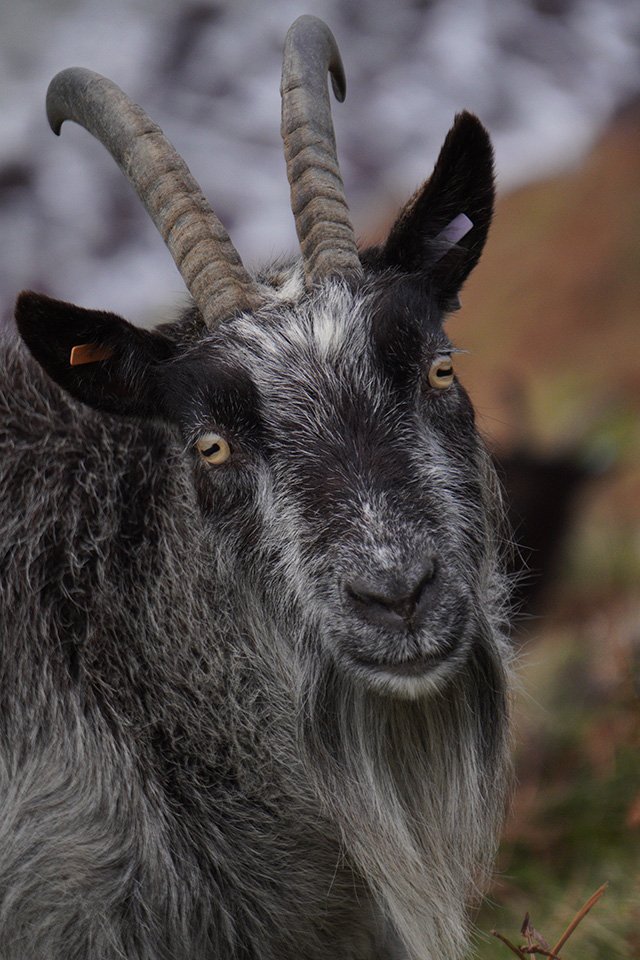
Sony E 55-210mm (Shot on a6400) @ 210mm | 1/1000 | f/6.3 | ISO 1000 | Handheld | ** Full Resolution SOOC Download: JPEG | RAW
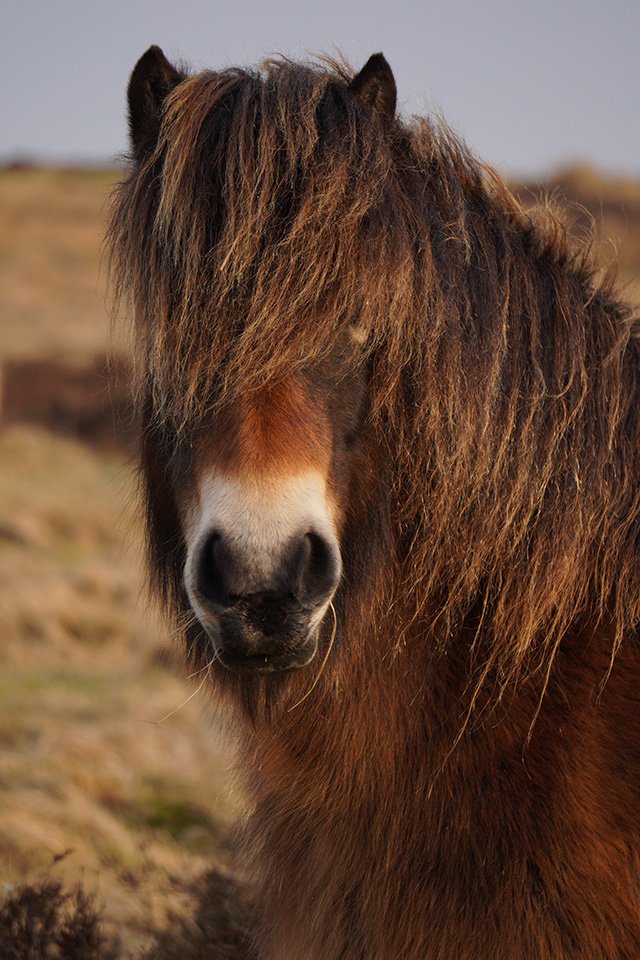
Sony E 55-210mm (Shot on a6400) @ 150mm | 1/640 | f/5.6 | ISO 400 | Handheld | ** Full Resolution SOOC Download: JPEG | RAW

Sony E 55-210mm (Shot on a6500) @ 210mm | 1/250 | f/6.3 | ISO 200 | Handheld (I don’t provide full res images for superbike shots I’m afraid)
Pros: Price, central sharpness, weight, autofocus performance
Cons: CA, vignetting
Recommended Reviews: Jay SonyAlphaLab | Technology Mafia (YouTube)
Sample Photos: Flickr
Minimum Focusing Distance: 1m (3.28ft)
Minimum Aperture: f/22-32
Maximum Aperture: f/4.5-6.3
Aperture Blades: 7
Auto Focus: Yes
Stabilization: Yes
Filter Thread Size: 49mm
Length: 108mm (4-3/8 in.)
Diameter: 63.8mm (2-5/8 in.)
Weight: 345g (12.2oz.)
Before You Go
If you don’t see a lens here that appeals to you, then I’d definitely recommend looking at my Full-Frame E-Mount Lenses Guide for further options. Full-frame (FE) lenses are fully supported on Sony APS-C E-mount cameras like the Sony a6000 series.
Whichever lens you go for I’d recommend updating both the lens and camera to the latest firmware version, as new firmware releases often address compatibility issues and improve autofocus performance with some lenses.
Let me know in the comments below if you have any questions. And if you feel like I’ve missed a lens out that should really be included, again please let me know in the comments.



For street photo and landscape, what model? I’m thinking of the 6100, which has touch screen, which I think is important, but has no stabilization?
Hi António. If you are hand holding and shooting in low light then stabilization can be helpful. If you will be using the a6100 with lenses that include stabilization (OSS) like the 18-135 or 18-105 then you don’t really need IBIS in the camera. Hope that helps a little!
Would be great to hear which lenses have weather sealing, here in South Africa we can have 5 seasons in a day, so I will only use weather sealed lenses on the A6600 but am unsure which Sony lenses have weather sealing, I know the new Tamrons for Sony E mount all have some so they look like options, but I like the Sony lenses to but it seems that few if any Sony e-mount lenses have weather sealing, thanks.
Hi Jonathan. I plan to update this article soon and will do my best to find out which lenses have weather sealing. However, if the rain is coming down hard I would always recommend using a plastic bag just to be safe, as the a6600 is not completely waterproof. All the best, Tim
Hello! Hope you’re safe and sound! I have an alpha 6400. I want to buy a telephoto lens for wildlife and a lens for landscape and street photography. However, I wish to upgrade to a full frame camera in the future. Which full frame lenses would you recommend which offer optimum performance and are especially compatible with an apsc camera for the above-mentioned purposes. Kindly let me know, it would be incredibly helpful.
Hi Achyutha. Thanks for commenting! 🙂 You didn’t mention your budget since this makes all the difference! The Sony FE 200-600 is my favorite wildlife lens now even though I still own the 100-400. I use it on my a6400 and full-frame cameras. If that’s too expensive then the Sony FE 70-300 is worth looking at, but it’s a little short for wildlife especially on full-frame. The Sigma 150-600mm F5-6.3 DG OS HSM Contemporary (Canon Mount) with the Sigma MC-11 adapter is a much lower cost option. You don’t get the native autofocus speed of the Sony but it’s not too far behind. For landscape and street it’s a tricky one if you just want one lens to do both. I’d probably recommend the Sony FE 24-105, the Tamron 28-75 F2.8 or the Sigma 24-70 F2.8 if you just want one lens, although they may not be wide enough for you on the a6400. Otherwise if you are looking at prime options there are quite a few to choose from. Take a look at my Sony FE Lenses Guide for further options. Hope that helps a little! Tim
Thank you very much Tim for your valuable input! I still had a small query. I love your channel on YouTube and have been following from the past 6 months, so I know you own both full frame and cropped senors. Do your full frame lenses perform as well on your a6400? If not? Is there a not noticeable difference in the performance? Awaiting your input on this! Thank you
Hi Achyutha, full frame lenses work perfectly on the APS-C cameras like the a6400, there is really no disadvantage to using them apart from the larger size and increased price over the APS-C lenses. All the best, Tim